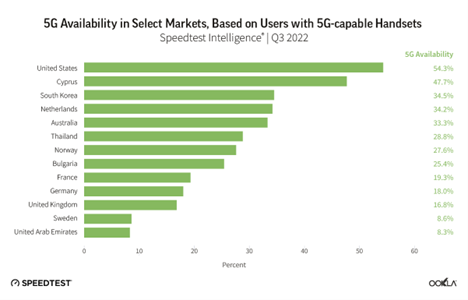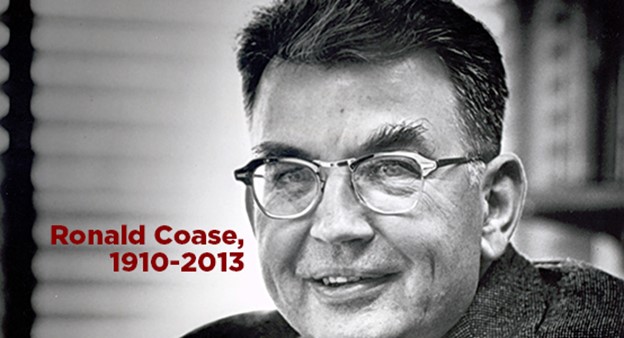To Reap Digital Gold Look for Kludge, Hope for Inspiration

If you want to come up with the next big thing for digital transformation, you shouldn’t wait around for inspiration.
Maybe the apple falling from the tree really did inspire Isaac Newton to develop his theory of gravity. In more recent times, it is harder to know whether eureka moments are more in the minds of the publicist than the founders. That’s what happened with the story that Pierre Omidyar started eBay because he wanted to help his wife collect Pez candy dispensers.
The problem with inspiration is that a stroke of luck may not happen. Newton was at the family farm only because he was trying to escape the pandemic of the time. And even if the Pez story was true, what if Omidyar hadn’t met and fallen in love with a collector?
But Entrepreneurs Can Apply Rigorous Analysis
There’s no magic formula for identifying new digital-based ways of doing things in the physical economy.
Entrepreneurs and corporates can apply rigorous analysis to identify innovative opportunities. The FIT® Framework introduced by Karen Webster provides a set of tools for conducting important elements of that analysis.
A few weeks ago, I described how “friction fighters” like Airbnb develop solutions that make traditional markets work more efficiently by reducing the time and cost of transacting. In this piece, I dive into identifying frictions in the more traditional ways of doing things, aka the status quo, that can become an opening for exploring new digital opportunities.
The FIT analysis starts with identifying a particular part of the traditional economy with a substantial addressable market that has worked the same way for a long time and appears to be a promising candidate for uncovering frictions that all stakeholders have lived with or worked around with less than optimal outcomes. That analysis leads to a deep dive into those frictions and a transparent appraisal of whether there is an opportunity for digital-led change.
The Three Sources of Frictions
Kludge is the first main source of friction.
Kludge refers to practices that are clumsy, inelegant and inefficient. Kludge is everywhere.

Sometimes, it is obvious, like still getting paper checks by snail mail in the United States.
Other times, we just take it for granted, such as all the hassles in buying a house.
And it is not just consumers. Ask any medical professional whose time is consumed with paperwork. Or most employees who have to work with information technology strung together from legacy technologies.
Kludge often arises from “clusters of awkwardness” — a wonderful phrase coined by my colleague, David Teece, the world’s most cited scholar on business and management.
These clusters include inflexible contracts, institutional arrangements and engrained practices that throw sand in the gears of the economy. Nevertheless, they have become more or less standard operating procedures.
Often, kludge leads to situations in which a lot of steps need to be undertaken to do business, where the exchange of value involves many different middlemen, or where many different pieces of technology are “kludged” together to make something work. The result is that everyone associated with that transaction spends too much time and incurs too much extra cost to get something done.
The second source of friction involves coordination. Many markets involve network effects between participants (as with short-term rentals and travelers) or require complementary products to work well together (mobile phones and cellular networks) to drive and deliver value.
Some markets have network effects, yet frictions of coordination hold them back. That was the case with short-term rentals before Airbnb. Newspaper (and then internet-based) advertising only went part of the way to connecting hosts with capacity and guests who needed a place to stay. Advertising alone wasn’t enough to solve the coordination problem and get the flywheel moving at scale.
Other markets just take time to coordinate the provision of complementary products. It takes a long time, for example, for cellular networks to adopt new standards, such as 5G, which then limits the adoption of new phones based on the standard, which in turn delays the deployment of new apps that leverage the new standard.

Contractual frictions are the third source.
Most transactions — whether between businesses and businesses, businesses and consumers, and businesses and employees — involve some ongoing relationship between the parties over time. When a consumer buys a car, they rely on the manufacturer to have produced a reliable product. And when a dealer leases a car or a bank lends money to a consumer to buy one, they depend on the buyer to make timely payments.
These ongoing relationships often have a variety of frictions related to asymmetric information, moral hazard, and opportunistic behavior. I refer to them as contractual frictions because there’s often a written contract between the parties or at least an informal contract that reflects the expectations of the parties.
Contractual frictions have been a big deal for short-term rentals, as I noted in my piece on Airbnb. Hosts may misrepresent their properties, for example, while unattended guests may trash the place during all-night partying.
Airbnb developed rules and escrow procedures to deal with these issues, although problems still remain. These same issues have arisen for eCommerce platforms. “Matchmakers,” my book with Dick Schmalensee, described how Alibaba identified and solved these frictions for its Chinese B2C business.
Economists have done many insightful studies on understanding and fixing contractual frictions; these are part of a specialty field called “transaction costs.”
Ronald Coase won the Nobel Prize in economics in 1991 for showing, among other things, how important these contractual frictions are for understanding the economy. His work inspired other economists to analyze these frictions, including some who won their own Nobel Prizes. (Coase published his last book when he was 102, a year before he passed away.) It may seem odd, but much economic theory assumes there are no transactions costs similar to the frictionless plane in physics.

Frictions and New Products
Reducing frictions isn’t necessarily just about shaving off some costs and layering on digital to make things work more efficiently. To reap the greatest rewards, entrepreneurs and corporates should be looking for situations where the frictions are so severe that eliminating them results in what almost seems like an entirely new product.
Consider ride sharing.
The taxi industry was a nasty mix of kludge, coordination and contractual problems. In some cities, such as Boston, where I live, getting a taxi was kludgy. Not easy to hail and not reliable to book. There wasn’t also a good match between drivers and passengers as anyone seeking a taxi in lower Manhattan in the late afternoon discovered. Depending on the rules and enforcement, passengers couldn’t be sure what service they would get when they jumped in a taxi. As for payment, the credit card terminals in the back of those taxis were always “broken” as drivers preferred cash.
Uber, Lyft and other ride-sharing platforms globally solved these problems. Driver and rider apps eliminated much of the kludge and made payments invisible by bridging the online and offline worlds. The gig model, surge pricing and the apps created a sufficient density of drivers to solve the coordination problem. Add to that written contracts with drivers, precise rules and bilateral ratings eliminated much of the contractual issues.
Fighting Friction in the Remaining 90%
Almost 30 years after the launch of the World Wide Web, the potential for friction fighters with digital solutions is enormous. According to a November 2022 study by the U.S. Bureau of Economic Analysis, the digital economy accounted for only 10.3 percent of U.S. GDP in 2021. That understates the role of the digital economy somewhat because it doesn’t include digital intermediaries like Uber. It also doesn’t account for how traditional businesses are using digital solutions such as electronic health records.
Nonetheless, it is obvious that large portions of the economy have barely been touched by the digital transformation. The rapid acceleration in artificial intelligence technologies has also increased the opportunities for coming up with disruptive innovation for much of the digital economy.
As technology and business-model innovation progress, there will be more opportunities for entrepreneurs and corporates to go back and innovate the old digital economy as we are seeing now.
Scouting out kludge, coordination and contractual frictions is only a start in the search for opportunities. A future post will focus on time. It is the most important aspect of economic life but is often ignored in the analysis of innovation.
David S. Evans is an economist who has published several books and many articles on the technology businesses, including digital and multisided platforms, including the award-winning Matchmakers: The New Economics of Multisided Platforms. He is currently the Global Leader for Digital Economy and Platform Markets at Berkeley Research Group. For more details on him, go to davidsevans.org.
